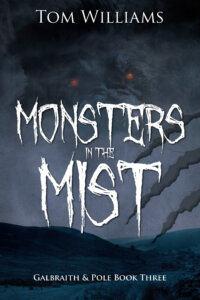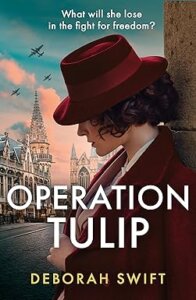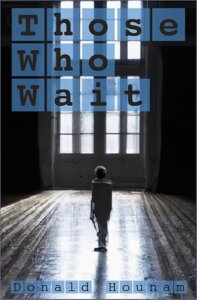by TCW | Aug 2, 2024 | Writing life
It got so hot in London that we have headed off to the hills and are spending a few days in mid-Wales. I’ve posted photos before, but they never really catch it, so I took a couple of short videos and tried to put them on TikTok. I’m not sure they are an improvement to be honest and on the WiFi available here they are painfully slow to upload. Still, the first one is available at Tom Williams (@tomwilliams4777) | TikTok so let me know what you make of it. EDIT: I’ve got the second one up too: https://www.tiktok.com/@tomwilliams4777/video/7398266204302986529
It’s the part of the country that features in Monsters in the Mist so if you want to know what it’s like you could do worse than read that. It’s very different from my historical novels, featuring vampires, secret underground lairs and lots of descriptions of wet days in Wales. It’s the third of my Galbraith & Pole Urban Fantasy series, though you don’t have to have read the first two to enjoy it. It’s just £3.99 on Kindle.
Anyway, that’s what I’m doing right now. I hope you are enjoying our brief, belated summer.
by TCW | Jul 26, 2024 | Napoleonic history
When my wife was young, she lived in a small village in mid Wales. One day, one of her neighbours decided not to shop in the local market town but to travel away to the big city. When she got there, she found a junction that was controlled by traffic lights. She was so freaked out by this bit of modern technology, that she had to be guided through the town by a friendly policeman. True story.
There are many anecdotes about how, until comparatively recently, people didn’t travel the way they do today. Laurie Lee’s famous novel, Cider with Rosie, describes how, in the middle years of the last century, many people never travelled more than a day’s walk from their village. So we have this notion that people’s lives used to be very limited geographically.
In fact, around the beginning of the 19th century, when my James Burke books are set, the world was not nearly such a big place as we think. The Napoleonic Wars were, in their way, world wars. British forces clashed with the French and their allies throughout Europe and the Middle East. The French supported Indians fighting the British in India and Britain invaded South America. In London’s National Army Museum there is a map showing the movements of one private soldier during this period. Over the course of just a few years, he travelled halfway round the world.
My story follows the life of a real person, James Burke. He was born in Ireland but went to France to fight under the French flag. The French sent him to Saint-Domingue (now part of Haiti). There, he surrendered to the British and returned to this country. Eventually he was ordered to Buenos Aires. He also travelled to Spain and spent time in Brazil. He will have seen much more of the world than the average man of the mid-20th century. I’m now writing a book that has him in North America. There’s no evidence that the real James Burke ever went to North America, but many British soldiers did and he might have been one of them.
Colonialism in those days made the world, in many ways, a very small place. It also allowed for adventures on a very grand scale. I hope you enjoy reading about them.
by TCW | Jul 19, 2024 | Writing life
Another week gone and we finally have summer! Dancing outdoors yesterday and again on Sunday. Best enjoy it while it’s here.
Cutting back on blogging and social media has meant more time for enjoying summer. I’ve been dancing indoors and out and was able to skate from Hyde Park to Greenwich last weekend. I even got to meet a friend for a visit to the British Museum on Wednesday. OK, spending the afternoon in windowless rooms was not a particularly summery thing to but we went to see the mummies in the Egyptian galleries for the first time in years. They’re still amazing!
Skaters at Greenwich. (Yes, I’m in there somewhere.)
I’ve also been able to spend more time reading for pleasure – hence the book reviews that I’ve posted here for the last couple of weeks. I hope you’ve enjoyed them and that it may have persuaded some of you to take a look at the books I reviewed. (Click book covers to link to reviews.)
Cutting back on blogging may have reduced my sales a bit but at least it has given me more time to do some writing of my own. I’m still working my way through a first draft of the next James Burke story, which sees him in North America during the War of 1812. It’s a whole New World for me (see what I did there?) and I’m finding it quite hard work. I’m having fun reading myself into the place and period, though.
I hope you’re not missing my posts too much. You shouldn’t be – there’s a whole summer out there for you to enjoy. And I’m still here. If there’s anything you’d like me to write about, or if you have something of your own you would like to share on this blog, get in touch.
Have a lovely weekend.
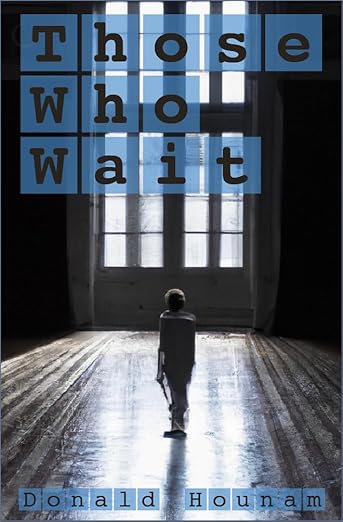
by TCW | Jul 12, 2024 | Book review
Another book review this week.
Full disclosure: Donald is a friend I used to go street-skating with. So when he wrote a book about a teenage street-skater who gets involved with a ghost, I sort of had to read it.
I’m glad I did because it’s a blast. Fifteen year-old Stephen is orphaned when his dad dies of a heart attack while Stephen is out skating, leaving his son racked with guilt. Stephen’s father’s will has made his aunt Teresa his guardian. Teresa lives in Paris, so Stephen moves in with her in her apartment filled with old books of magic, the memory of her dead lover, and the ghost of a young boy.
Teresa used to be a research scientist working in the field of subatomic particles. Hounam has fun with the idea that modern quantum theory makes about as much sense to most people as magic. Teresa thinks that she can use quantum physics to recreate ancient magic. She tells Stephen that she might be able to use magic to summon the ghost.
Who is the ghost? Can Teresa really perform magic? Why have two young boys vanished mysteriously, close to Teresa’s apartment? And is Stephen himself in danger?
The mix of magic, mystery, murder, and other things beginning with M makes a satisfying page-turner of a story but Hounam uses this as a framework to hang a coming-of-age story on. Stephen is learning some hard truths about love, family, and relationships in between skating the famous Pari Roller mass street skate and learning to slalom on his roller blades. Hounam’s enthusiasm for the Paris street skate scene shines through and would probably have me picturing it even if I hadn’t actually lived it with him when we were both old enough to know better.
The assorted digressions from the main plot (an aunt with an obsession with religion, some nice observations of the casual cruelty of older teenagers to younger peers with romantic inclinations, discussions of guilt and loss) raise this above your standard ghost/horror story. I enjoyed it a lot and I would recommend it to anyone who wants to read something out of the ordinary, even if they’ve never been on skates in their lives.
Those Who Wait is available on Kindle: Those Who Wait eBook : Hounam, Donald: Amazon.co.uk: Kindle Store
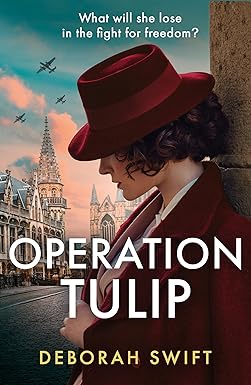
by TCW | Jul 5, 2024 | Book review
Operation Tulip is the third and final book in Deborah Swift’s World War 2 Secret Agent series. Our heroine, Nancy Callaghan, started the war with the SOE, as a cipher clerk at their offices in Baker Street. She went on, though, to become a field agent, working as a radio operator in occupied Holland.
Operation Tulip is essentially a spy thriller. I won’t detail the plot because of spoilers. I hope you’ll read it and enjoy it for yourself. It really is a very good read. Deborah Swift is one of those writers who can really hook you into a story and (very unusually for me) I twice nearly missed my stop while reading Operation Tulip on the Tube.
Swift not only tells a good yarn but packs in a lot of history. It’s fair to say that she doesn’t like the Nazis. This was once such a given that it seems odd to be remarking on it, but nowadays so many people are prepared to suggest that extreme right wing politics has something going for it that it is worth reminding ourselves what happened when Europe last decided to give fascism a go. Swift is unsparing in her descriptions of Nazi atrocities. As her historical note (well worth reading) points out, in the winter of 1944/5, when this story is set, more than 18,000 Dutch civilians starved to death with a further 980,000 classed as malnourished. In places, Operation Tulip is not an easy read.
Given the amount of historical detail, I would have welcomed more about the relationship between the SS and the Gestapo. I suspect my interest in the details of the organisation of the Nazi party and its agencies is not widely shared but lots of people are interested and, given that both the SS and the Gestapo feature a lot in the story, I worried about the details of the relationship between the two. I would have liked more about this, even if Swift had felt it would have been better dealt with in her historical note.
Swift is such a good storyteller that even a subplot which sees her boyfriend mounting a one-man rescue operation across the allied frontline manages to carry you along, although here we are moving rapidly away from the nitty gritty detail of SOE operations into James Bond territory. It’s all terribly readable, though, and certainly adds even more excitement and tension to an already gripping story.
In summary, this is a thrilling spy story set against a historically detailed background. I enjoyed it Immensely and I’m sure many others will too.
Operation Tulip goes on sale on 10 September and is available to pre-order now.
